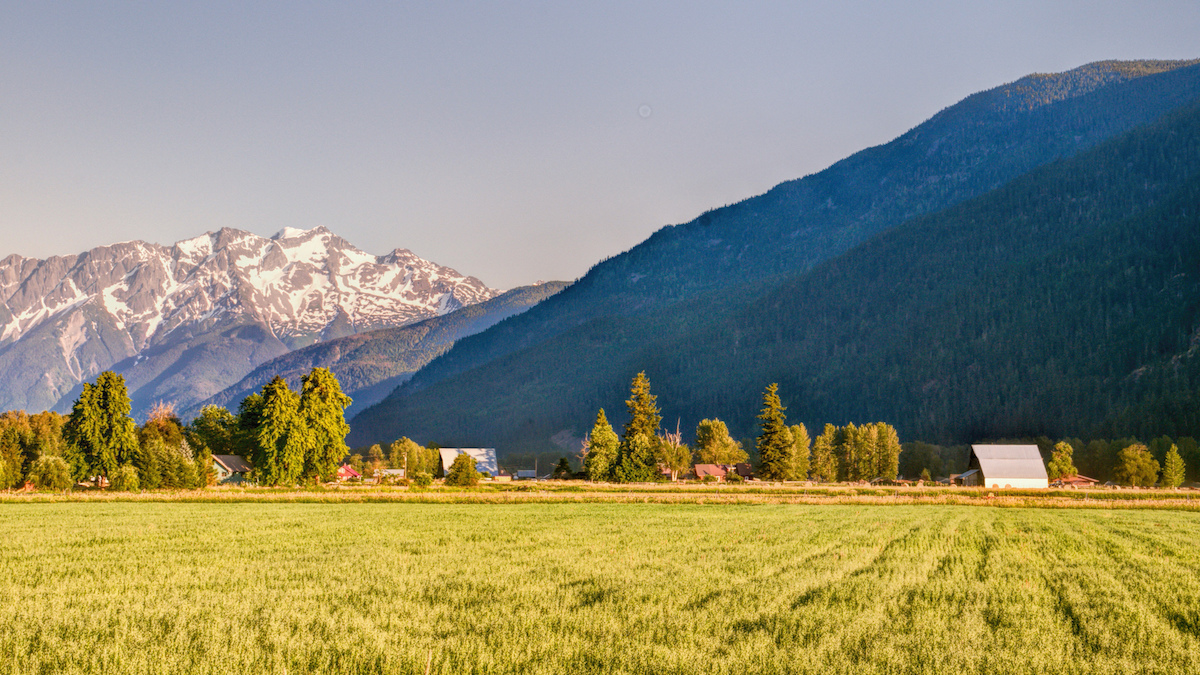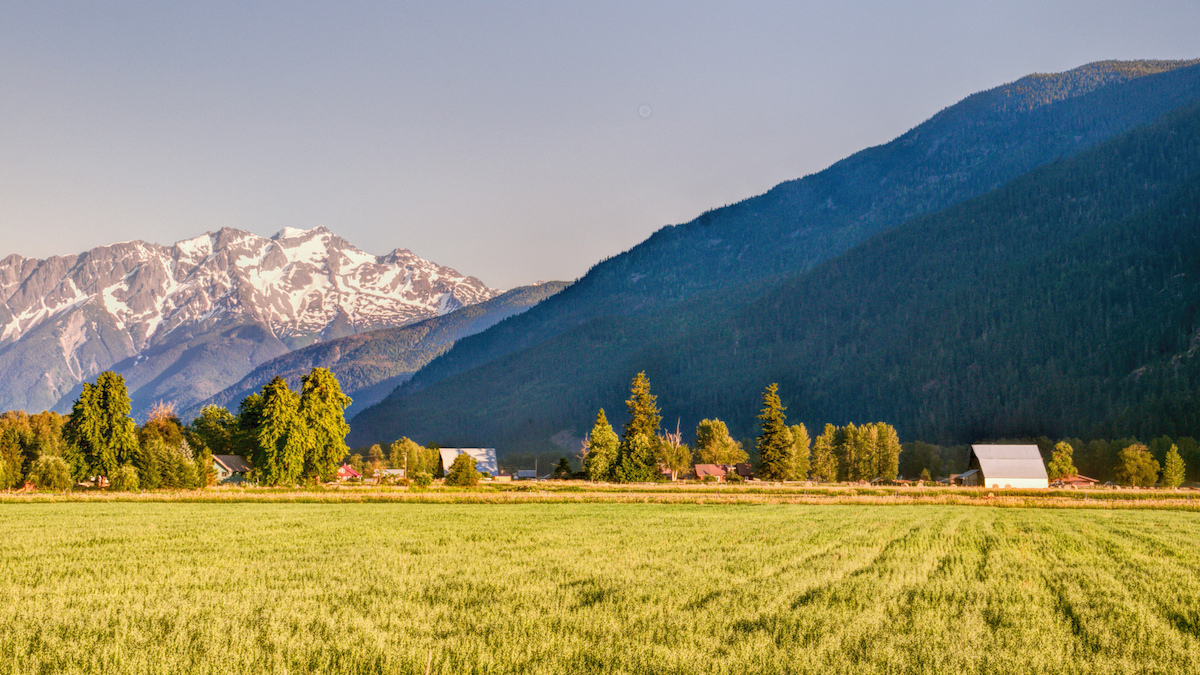Throwback Thursday: From the Archives
Farmland in British Columbia. Photo by Steve Olmstead
Debates over environmental protection often focus on whether to preserve land in its wild, “natural” state or to allow human interaction with nature. Stephen Budiansky challenged this distinction in the June 1996 edition of PERC Reports. He argued that what seems natural is more artificial than we think:
If I were setting out to write a conventional nature essay in the mode of Thoreau and his countless imitators, I should begin by describing the walk I took early this morning across field and wood. How I rejoiced in the cry of the Canada geese overhead and the flash of the white tail of a fleeting deer; how the crackling of the frosted grass beneath my feet as I crossed a hollow put me in mind of the family of wild turkeys I had seen there early in the fall; how every pore of my body was open to the sweet beneficence of Nature’s society unfettered by the artifices of many.
Yet every one of those stirring sights of nature’s timeless order was, in truth, nothing but the work of civilized man. The grasses in my field are aliens, timothy and bluegrass and red clover brought to America by seventeenth-century English settlers trying for a better hay crop. The sheep and horses and cattle in the field are alien imports too. But for their constant grazing, and for the annual visit of the haying machines, the open acres that stretch from my window to the copse at the bottom of the hill would in just a few years’ time be choked with brambles and red cedars. But even that could hardly be counted a natural process; the return of woods to abandoned farm fields is not nature reclaiming her birthright but nature led only farther astray. Red cedars readily take over abandoned pastures today only because centuries of grazing by livestock has unnaturally suppressed the hardwoods, such as oaks, that would otherwise outcompete the red cedars; the very abundance of red cedar today is an artifact of the dietary preferences of imported farm animals.
…
After 10,000 years of breaking the soil, after 100,000 years of setting fire to the forests and the plains, after a million years of chasing game, human influence is woven through even what to our eyes are the most pristine landscapes.
Such observations cut against the fashion of our times. We prefer to think of nature as a setting for soul-stirring contemplation of the infinite and unknowable, a cathedral to be entered with hushed tones and reverent thoughts. The nature lovers of our age jealously cling to an image of nature virginal and pure; they imagine an Arcadian wilderness where balance and harmony reign, beyond the defiling touch of man. Open any popular nature book, magazine, tract, or fundraising letter, and you do not have to read far to find the phrase, “balance of nature,” the notion that nature, left alone and freed from human influence, tends toward a state of harmony, balance, and beauty-and, conversely, that wherever man treads is trouble.
…
To literally let nature “take her course” is not one of the options any longer.
The irony is that to have nature be “natural” requires constant human intrusion. Restoration projects have been remarkably successful in reconstructing and maintaining native savannas and prairies through the use of clearcutting followed by regular, deliberate burning. The artificial turns out to be more “natural” than the natural. No matter what we choose to do, nature is being shaped by man.
Since 1996, PERC has continued discussions of ever-changing nature and humans role in shaping the natural environment. Terry Anderson has sat down with Dan Botkin to ask about the so-called “balance of nature.” Botkin, a biologist known for “solving environmental problems by understanding how nature works,” reminds us that “Nature’s always changing … We need to break away from steady-state thinking, from equilibrium, in a big way.”
Emma Marris, whose influential book, Rambunctious Garden, agrees. She argues we need to jettison the notion of a pristine natural world untouched by humans, and instead tend a rambunctious garden, “a hybrid of wild nature and human management.”
As Marris told us when she visited PERC in 2012: “Part of expanding our nature awareness beyond [national] parks is that it makes it easier to see nature on your block, in cities and suburbs. Then, instead of teaching our children to only look for nature when they visit a park, we can teach them to also see it on the walk to school or when playing in the backyard.”
This weekend, we will further explore our understanding of nature as our ecomodernist friends from the Breakthrough Institute and other environmental scholars join us for a workshop on Environmental Policy in the Anthropocene. This meeting of great minds will continue the discussion on nature that PERC has participated in since its beginning.
Read Stephen Budiansky’s full article here.




